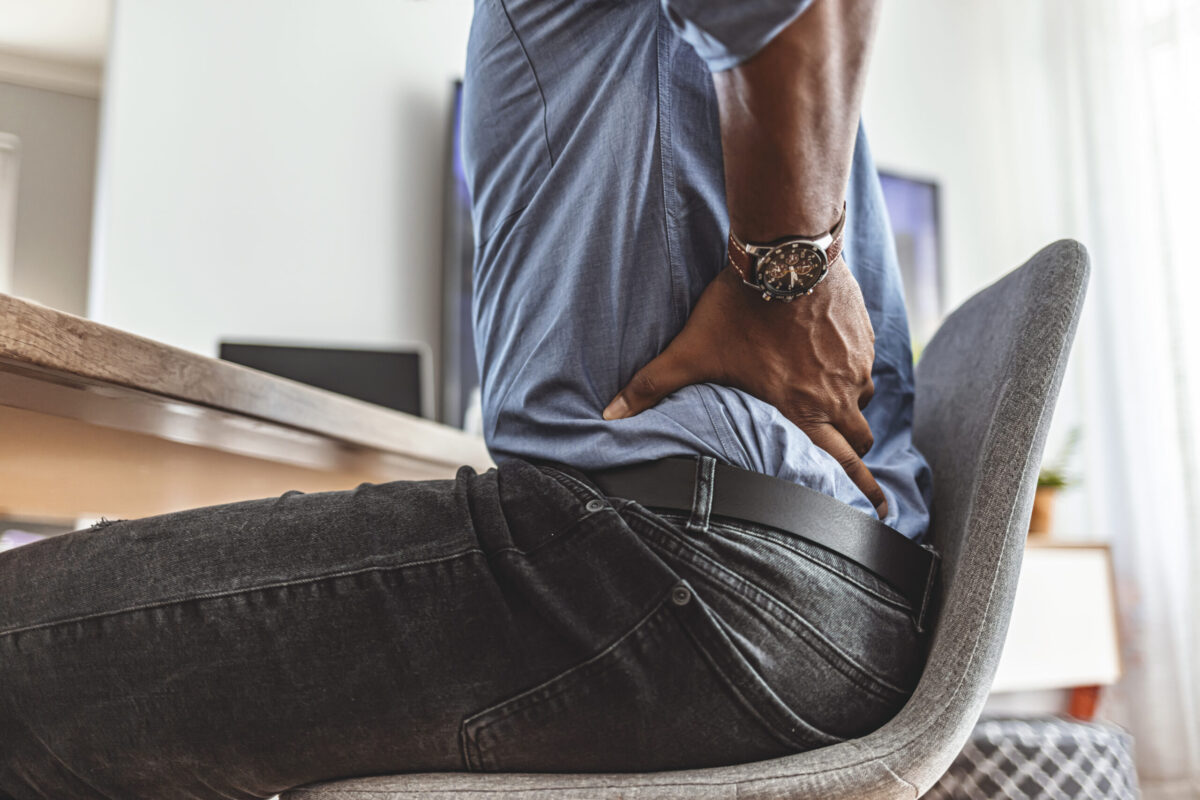Over the past year, many of us have spent a lot of time sitting — on couches, in home offices, at kitchen tables or in front of screens for virtual get togethers. And while being too sedentary is always a health concern, the way we sit is also important when it comes to preventing pain and discomfort.
“Posture is all about training your body to sit in a way that puts the least amount of strain on your muscles and joints,” says Tyler Waclawski, a certified exercise physiologist at BlueCross BlueShield of Tennessee. “Good posture isn’t complicated. It can be achieved through simple, basic concepts — many of which we already know — that we simply need to put into practice.”
What are the most common posture problems?
“The two most damaging problems are slouching and craning your neck,” says Waclawski. “Slouching can cause lower back pain, and pressing your head forward — the way you might to see your computer or read something small on your phone — puts a lot of strain on your neck.”
Acute lower back pain 101: causes, treatments & prevention
Bad posture can cause pain, discomfort and tightness along your spine, which can radiate to your shoulder blades, arms and hips. Over time, that pain can have a snowball effect, preventing you from exercising or participating in activities you enjoy.
What situations do people tend to have posture problems most?
Workspace
“Nontraditional workspaces are a big concern, especially this year,” says Waclawski. “If you’re working from a kitchen table, for example, it’s probably not set up for the best ergonomics. Pay attention to the position of your chair and desk, make sure you’re seated comfortably, and check the height of your screen. Many people are working on a screen that’s too low, which can cause neck and back pain.”

Car
“While driving, people are prone to slouch or position their seats too far back, which causes them to strain to lean forward to reach the wheel,” he says.
Living room
“It’s tempting to sink into your couch or recliner and just let it all go, but it’s better for your back and neck to sit a little more upright,” says Waclawski. “Also, if you put your legs up, try not to cross your feet. Uncrossed legs straight out front is better for your posture and circulation.”
What does good posture look like?
The 5 keys to good posture are:
- Sit up tall with your back straight and your shoulders back. Don’t exaggerate or tense up.
- Keep your chin back/neutral. Don’t strain forward.
- Make sure your bottom is touching the back of the chair, which ensures lumbar support.
- Keep your knees at a 90-degree angle.
- Place your feet flat on the ground. Fight the urge to cross your legs or put one foot behind the other
“If you can incorporate even 2 or 3 of these 5 steps you’ll notice a difference,” Waclawski says.
Any other tips for promoting good posture?
“Set a reminder to do some simple exercises to keep your muscles in the ‘tall and back’ position,” says Waclawski. “Roll your shoulders, tilt your head from side to side, or stretch your arms out wide and slowly bring them backwards until you feel your upper back muscles activate.”
Most importantly, remember to move regularly.
“The longer you’re in a chair or on the couch, the easier it is to slouch,” says Waclawski. “Get up at least once an hour to ‘wake up’ your muscles. It will help you reset, both physically and mentally, and it doesn’t take much movement — just stand up and walk around. When you come back to your seat, you’ll be a lot less likely to slouch.”
Read more about sedentary jobs and health.
Get more information about specific health terms, topics and conditions to better manage your health on bcbst.com. BlueCross BlueShield of Tennessee members can access wellness-related discounts on fitness products, gym memberships, healthy eating and more through Blue365®. BCBST members can also find tools and resources to help improve health and well-being by logging into BlueAccess and going to the Managing Your Health tab.





